As the ancient capital that has been preserved almost intact to this day, Hue symbolizes the thread linking the past and present. It was the seat of the Nguyen Dynasty, the last feudal dynasty, and also the most complete dynasty in the history of our country, chosen as the place of residence.
Because of this factor, the ceremonies and rituals here are considered the standard of ceremonial norms of the feudal period in Vietnam, especially the rituals celebrating Tet - the most important holiday of the year.
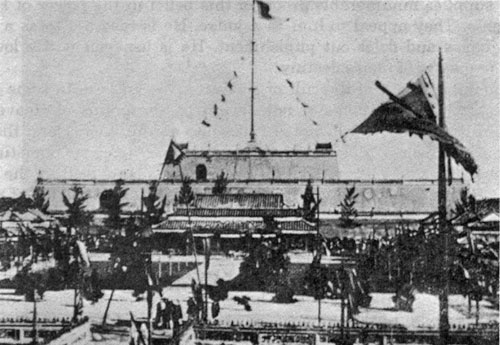
Let's journey back in time to explore how kings and courtiers at the Hue Imperial Citadel celebrated the New Year.
As the grandest occasion of the year, the New Year celebration within the palace was meticulously organized. Starting a month before the festival, both high-ranking officials and common servants within the palace had to prepare offerings and decorate the entire palace with festive banners and flowers.

The Tet rituals commence as early as the month of Chạp with the Ban Sóc ceremony (announcing the lunar calendar), Nghinh xuân ceremony (welcoming the Lunar New Year), Phất thức ceremony (cleansing ancestral tablets and scriptures), Cáp hưởng ceremony (inviting ancestors to partake in the Tet feast), and Thướng tiêu ceremony (erecting the New Year tree)... However, the most significant day remains the first day of the new year.
The onset of the first day begins with the royal court ceremony, which is also the most important ceremonial event. On that day, the drums at the Thái Hòa Palace are beaten starting from around three to five in the morning.
The golden dragon-shaped flag of the grand ceremony is hoisted onto the Kỳ Đài Square, surrounded by numerous colorful banners adorning the Đại Triều, Ngọ Môn, and Kỳ Đài Courtyards.
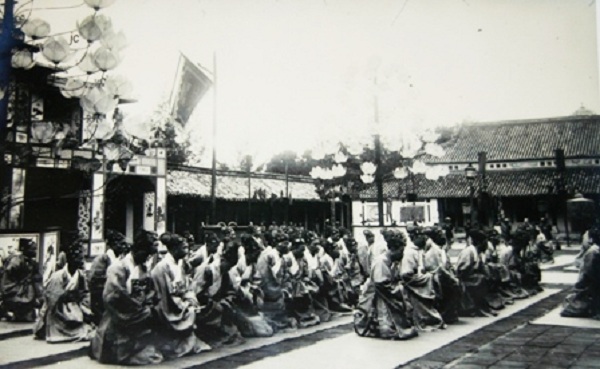
At the appointed time, the king, adorned in royal robes and the nine-dragon crown, carrying the Trấn Khuê tray, is carried on a palanquin from the Cần Thành Palace to the Thái Hòa Palace to conduct the New Year celebration.
As the procession passes through the Ngọ Gate, the sound of gongs, drums, and festive music fills the air to welcome the king. Nine thunderous shots from the royal cannons echo across the sky.
Seated on the golden throne, the king, adorned with jade belt, is elevated above while the high-ranking officials and courtiers kneel in the courtyard. After the officials offer their respects, they present auspicious wishes and collectively chant, "May Your Majesty receive ten thousand years of longevity."
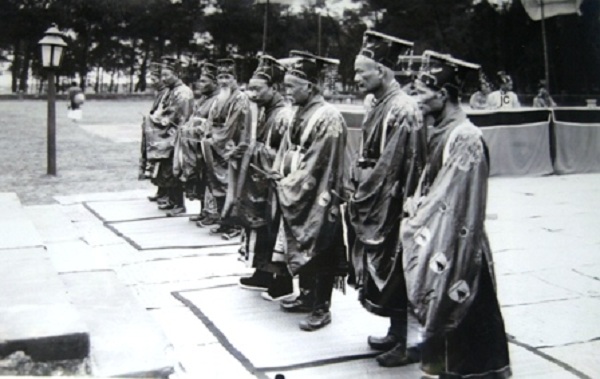
During that time, the Chief Minister would read the king's New Year directives, host banquets, and distribute gifts to officials of various ranks. After the ceremony, according to protocol, officials would return to their homes.
However, during the reign of King Bao Dai, influenced by Western culture, the king led officials and Western guests to the Can Chanh Palace to invite everyone to a glass of champagne.
On the first and second days of the Lunar New Year, the king would host banquets and distribute spring bonuses to officials and members of the royal family.
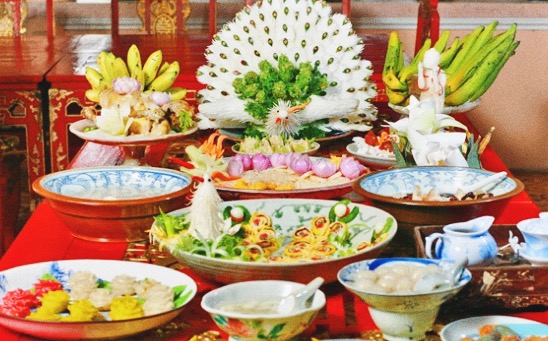
The Lunar New Year banquets in the Nguyen dynasty palace were meticulously prepared and more luxurious than usual, featuring a wide array of exquisite dishes. These banquets showcased a diverse and rich selection of both noble and commoner cuisine.
Ancient records from the Royal Archives document a variety of dishes, including seafood (such as fish and abalone), game meats (deer, goat, pork, chicken), rice, sticky rice, sweet soups, candies, and high-end delicacies like rolled rice pancakes, sea cucumbers, and bird's nest soup.
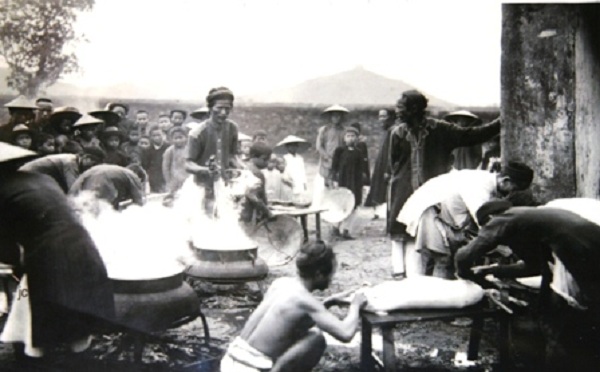
The king did not dine with the royal family or officials during the banquets but preferred to eat alone. However, during the reign of King Bao Dai, there was a change, and the king would eat with his wife and children.
While the banquets in the palace were grand, they typically only occurred for two days. Afterwards, entertainment and luck-testing games were organized, including activities like the "đầu hồ" game, royal calligraphy contests, poetry recitals, and chess matches.

After the third day of Tet, the imperial court organizes the "tịch điền" ceremony. The king goes down to the fields and plows three furrows to inaugurate the new agricultural season, praying for prosperity for the people.
In addition to the ceremonies and games mentioned, during the seven days of Tet, the palace also hosts ceremonies to worship the agricultural deities and the king and queen's river excursions on the Perfume River.
The king rides on a dragon boat while the queen rides on a phoenix boat; they wish the people a happy New Year in the capital. The grand ceremony to conclude Tet is the "kỳ đạo" ceremony (flag ceremony), typically held after the 11th day of Tet.
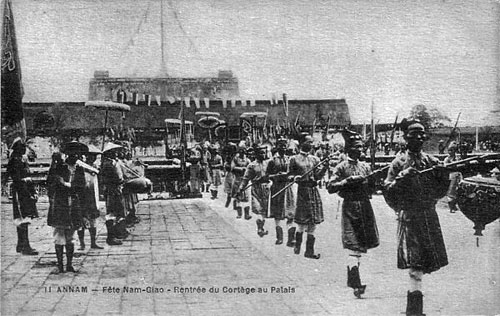
It can be observed that the Tet customs within the Hue imperial court do not heavily emphasize material indulgence but rather prioritize rituals and religious ceremonies.
Because of this ceremonial emphasis, which has been preserved through generations, Hue today remains an area with many customs and rituals, making it one of the most vibrant regions for celebrating Tet in the country.
This tradition represents a valuable cultural heritage that needs to be cherished and preserved amidst the current trend of Westernization that is increasingly influencing Vietnam today.